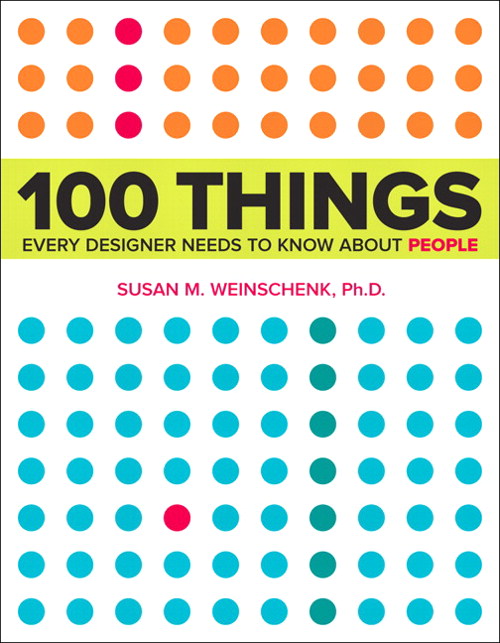After reading Susan Weinschenk’s 100 Things Every Designer Needs to Know About People, I found it a great reference for solving design problems. Susan breaks the book out into 10 self-contained sections that discuss the psychology of how people see, read, remember, think, and feel.
Susan does a great job of keeping each topic very digestible, with simple language, while still going deeper with a more scientific approach to things.
This book promises to answer questions every designer has had over the course of his or her career. I know I’ve asked a few of these questions myself:
- What line length for text is the best?
- Are some fonts better than others?
- How can you predict the types of errors people will make?
- What grabs and holds attention on a page or screen?
Each section is packed full of valuable information about how and why we humans think the way we do. One of my favorite sections was about how people see. A lot of the things in this section were basic reminders, like how red and blue colors are hard on the eyes when used together. Others were more in depth, like the various meanings of colors throughout different cultures, and how people see cues that tell them what to do with objects. The latter is especially important in user interface design, because if you want your user to click a button, it should look like a tactile button.

For web and user interface designers, I would recommend the sections about how people see, read, focus their attention, and decide. The takeaways from these sections were especially helpful in designing interfaces.
Overall I found this book a staple during my work day, I often refer to it when trying to solve an issue when I have to ask “what would the user do?” I would recommend this book to all of my fellow designer friends or to friends who are just interested in learning about how people interact with things in general.
You can purchase Susan’s book online at Peachpit in paperback and ebook format. Use our Peachpit User Group coupon code (UE-23AA-PEUF) to get 35% off your purchase.

